|
|
3D Animation (CGI, Computer Animation) 
3D animation works in a completely different way than traditional animation. They both require an understanding of the same principles of movement and composition, but the technical skill set is very different for each task. while in the past you had to be an amazing draftsman to be an animator, with computer animation that is not the case. 3D animation is more similar to playing with puppets rather than drawing.
“Computers don’t create computer animation any more than a pencil creates pencil animation. What creates computer animation is the artist.”John Lasseter
About 3D Animation
3D animation, also referred to as CGI animation, is made by generating images using computer graphics that create a series of images that forms an animation. CGI means Computer Generated Images, so it can easily mean both static and dynamic images using computer graphics.
The animation techniques of 3D animation has a lot of similarities with stop-motion animation, as they both deal with animating and posing models, and still conforms to the frame-by-frame approach of 2D animation, but is a lot more controllable since it is all digital feedback.
Instead of drawn or constructed with clay, characters in 3D animations are digitally modeled on screen, and then fitted with a ‘skeleton’ that allows animators to animate the models for their use.
Animation is done by posing the models in certain key frames, which the computer will then calculate and perform a ‘tweening’ animation that is interpreted by the computer in each frame between the key frames.
When the modeling and/or animation is complete, the computer has to render each frame individually, which unlike 2D or stop-motion animations, can be very time consuming depending on the quality of the images and the quantity of polygons in the scene.
a 3D animator will spend most of their time looking at curves that represent the movement of different body parts over time.
Another big difference with 3D animation is that unlike traditional animation, the character’s body parts are always present and should be taken to consideration.
I’ll explain:
When animating in 2D, the character has to be drawn from every frame. When the character is viewed from the side, half of its body isn’t shown and thus isn’t drawn. It technically doesn’t exist. It’s drawn on a flat page and there isn’t really more of the character other than what the animator draws.
With 3D though, the character’s body parts always exist in the shot. Even when one hand isn’t visible, it’s still there. That adds some work for the animator, since we need to be aware of the entire character at all times.
The last major difference with 3D animation is the frame rate. Traditional animators usually work on 2’s which means they draw a new drawing every 2 frames, and thus having one drawing last for 2 frames. With 3D animation, however, the motion is always smooth (except for stylized pieces which intentionally try to look different) and having a character stop completely looks like a mistake.
Even when the character is standing still there should always be some sign of life or gentle movement to keep the illusion of life, this is something 2D animation can get away with much more easily than 3D animation.
History
3D animation has definitely revolutionized how the animation industry looks today, and it was all started with Toy Story (1995, Lassetter.) Computer generated animations wasn’t completely new at the time, since it had already been often used in TV shows, movies and computer games, but Toy Story set the bar by being the first feature-length computer animation, leading to a whole new industry and market.
3D animation also lead to studios trying to achieve photo-realistic animations by combining high-level computer processing with advance motion-capture. This has led to films such as Final Fantasy: Spirits Within (2001, Sakaguchi) and The Polar Express (2004, Zemeckis), with very mixed results. This kind of animation became rarer as the decade passed, as the process is a lot more complicated than key framed 3D animations, but has passed on to feature film VFX.
Software
 Autodesk Maya Autodesk Maya
Maya is the industry standard 3D software, used in most large studios. Maya, Softimage and 3D Max are all a part of Autodesk and work quite similarly. Choosing one is a matter of personal and technical preference.
Supported platforms:
- Windows XP, Vista, 7, 8
- Mac OS X
- Linux
Learn more…
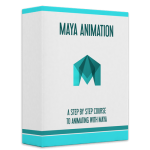 If you want to learn more about character animation in Maya, check out our Maya Animation Course. If you want to learn more about character animation in Maya, check out our Maya Animation Course.
 Autodesk Softimage Autodesk Softimage
From Autodesk: Softimage character animation software offers high-performance creative tools for artists and technical directors working in 3D game development and visual effects.
Supported platforms:
- Windows XP, Vista, 7, 8
- Linux
Learn more…
 Autodesk 3DS Max Autodesk 3DS Max
From Autodesk: 3DS Max provides a comprehensive 3D modeling, animation, rendering, and compositing solution for games, film, and motion graphics artists. It has tools for crowd generation, particle animation, and perspective matching, as well as support for Microsoft® DirectX 11® shaders.
Supported platforms:
- Windows XP, Vista, 7, 8
- Mac OS X
Learn more…
 Cinema 4D Cinema 4D
Cinema 4D is a motion graphics artist’s best friend. It’s a 3D program for the After Effects user. Very intuitive, and works directly with After Effects without the need to render first. This would not however be my first choice for serious 3D production since it was designed from the ground up with motion graphics in mind.
Supported platforms:
- Windows Vista, 7, 8
- Mac OS X
Learn more…
 Blender Blender
I don’t have much experience with Blender, but its main advantage is that it is open source, works on multiple platforms and free for download.
From Blender: Blender provides a broad spectrum of modeling, texturing, lighting, animation and video post-processing functionality in one package. Through its open architecture, Blender provides cross-platform interoperability, extensibility, an incredibly small footprint, and a tightly integrated workflow.
Supported platforms:
- Windows XP, Vista, 7
- Mac OS X
- Linux
- FreeBSD
Learn more…
 If you want to learn more about character animation in Blender, check out our Blender Animation Course. If you want to learn more about character animation in Blender, check out our Blender Animation Course.
Schools
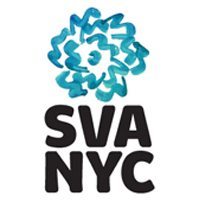 School of Visual Arts (SVA) School of Visual Arts (SVA)
School information: Founded in 1947 by Silas H. Rhodes and Burne Hogarth as the Cartoonist and Illustrators School, and then renamed in 1956. Part of the Association of Independent Colleges of Art and Design as one of 36 leading art colleges in the United States.
The school offered its first degree in 1972, and it’s first master’s degree in 1983 in Fine Arts for painting, drawing and sculpture.
- Location: New York, NY. USA
- Courses: Animation, Computer Animation and Visual Effects
- Tuition cost: $16,780 per semester + Department fees (Animation: $900, Computer Animation and visual effects:$1,340)
- Notable alumni: Bill Plympton (Academy nominated animator), John.R.Dilworth (creator of Courage the Cowardly Dog), Pres Antonio Romanillos (supervising animator at Disney and Dreamworks animation)
- Start of Academic year: September
- BFA Animation: 270 students
- BFA Computer Art, Computer Animation & Visual Effects: 325 students
- Notable graduate film: Kiwi! (Dony Permedi, 2006)
Read more…
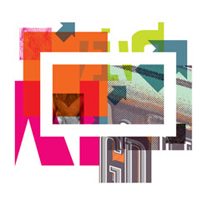 Ringling College of Art and Design Ringling College of Art and Design
School information: Founded in Sarasota, Florida, by Dr. Ludd M. Spivey as an art school in 1931, and as a branch of the Southern College in Orlando. Became an independent college in 1933.
Qualified as a full degree-granting institution in 1971. Ringling College is named after John Ringling, a circus magnate, who was interested in funding an art college, but wasn’t interested in Southern College as he wanted to establish his own at his wife’s museum.
However, he lost his museum and residence in bankruptcy, and it was all given to the state just before he died. Ringling’s nephew made a deal with Southern College to open an art college in Sarasota, and it was named School of Fine and Applied Art of the John and Mable Ringling Art Museum.
- Location: Sarasota, Florida. USA
- Courses: Computer Animation
- Tuition cost: $18,400 per semester
- Notable alumni: Aaron Blaise (Director of Disney’s Brother Bear)
- Start of Academic year: August
- Notable graduate film: Dia De Los Muertos (Ashley Graham, Kate Reynolds, and Lindsey St. Pierre, 2013) Won Student Academy Award, 2013
Read more…
 University of California (UCLA) University of California (UCLA)
School information: UCLA is a public University that was founded in 1919 as part of the University of California system, comprised of three universities in the state.
The animation program was established in 1948 by William Shull, a Disney animator, as just a group of various animation classes. When Dan MacLaughlin became head of the department in 1971, he started the MFA program for animation where he worked as the sole faculty member for years.
- Location: Los Angeles, California. USA
- Courses: Animation
- Tuition cost: $33,193 per academic year
- Notable alumni: David Silverman (Animator, Producer on The Simpsons), Hoyt Yeatman (VFX supervisor, won Academy Award for The Abyss)
- Start of Academic year: February
- MFA Animation Notable graduate film: Her Lion’s Jump (Régis Camargo, 2013)
Read more…
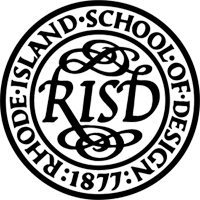 Rhode Island School of Design (RISD) Rhode Island School of Design (RISD)
School information: RISD was founded by the group The Centennial Women in 1877. The Centennial Women was a group formed to exhibit creations made by women from design schools, patents from female entrepreneurs, and books written exclusively by women, at the 1876 Centennial Exposition.
The group raised $10,000, and by the end of the expo had over $1,675 left, which they decided to invest into founding Rhode Island School of Design.
- Location: Providence, Rhode Island. USA
- Courses: Film/Animation/Video
- Tuition cost: $44,284 per academic year
- Notable alumni: Seth MacFarlane (Creator of Family Guy) Bryan Konietzko & Michael Dante DiMartino (Creators of Avatar: The Last Airbender), Lance Wilder (Animator, The Simpsons)
- Start of Academic year: Second week of September
- Film/Animation/Video: 50 students per year
- Notable graduate film: Inner Tubes (Tim Beckhardt, 2009) Screened at Ottawa International Animation Festival and Boston Underground Festival
Read more…
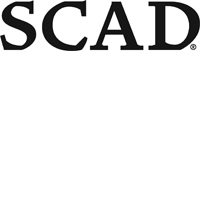 Savannah College of Art and Design (SCAD) Savannah College of Art and Design (SCAD)
School information: Founded in 1978 by Paula S. Wallace with her husband and parents, taking out a $200,000 loan to build the first educational building, by renovating the Savannah Volunteer Guard Armory.
The university first opened in 1979 with only 71 students. Currently the University has over 11,000 students.
- Location: Savannah, Georgia, USA. Atlanta, Georgia, USA. Hong Kong, Guangdong, China. Lacoste, Vaucluse, France.
- Courses: Animation, Visual Effects
- Tuition cost: (In order of locations) $33,795 (American dollars), $261,911 (Hong Kong dollars), $10,983 (American dollars)
- Notable alumni: Mir Zafar Ali (Visual effects specialist, The Day After Tomorrow)
- Start of Academic year: September
- Notable graduate film: Legacy (Adam Floeck, 2013)
Read more…
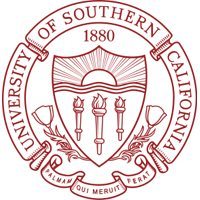 University of Southern California (USC) University of Southern California (USC)
School information: USC was founded in 1880 by judge Robert M. Widney, who managed to acquire donations from Ozro Childs, John Gately Downey, and Isaias W. Hellman; three very influential figures at the time.
Originally operated in affiliation with the Methodist Church, but became officially secular in 1952. It has the largest amount of international students in the United States, and enrolls over 18,000 domestic/international students each year.
Has its own IMAX theater and research lab, which opened this year.
- Location: Los Angeles, California. USA
- Courses: Animation and Digital Arts
- Tuition cost: $48,347 for two semesters
- Notable alumni: George Lucas (Creator of Lucas Arts, Industrial Light and Magic, Star Wars), Eric Hanson (Digital Designer/Lead VFX artist, The Fifth Element), Ray Harryhausen (Stop-motion and Special Effects animator, Jason and the Argonauts)
- Start of Academic year: Last week of August
- BA Animation and Digital Arts: 75 students
- MFA Animation and Digital Arts: 45 students
- Notable graduate film: Ladies Knight (Joe Rothenberg, 2012) Nominated Best Animated Student Short at Annie Awards.
Read more…
 Animation Mentor Animation Mentor
School information: Founded in 2005 by Bobby Beck, Shawn Kelly, and Carlos Baena, the last two employed as animators at Industrial Light and Magic.
- Location: Emeryville, California. USA
- Courses: Classic animation, Character animation, Creature animation
- Tuition cost: $18,928 for Full 18 Month Program.
- Notable alumni: Siggurdur Orri Thorhannesson (Animator, Guardians of the Galaxy), Jude Brownbill (Animator, Pixar)
- Start of Academic year: Every Spring, Summer, Fall, and Winter
- Animation Mentor courses: 5,000 students (Total)
- Notable graduate film: Greed (Alli Sadegiani, 2011)
Read more…
Source.
|